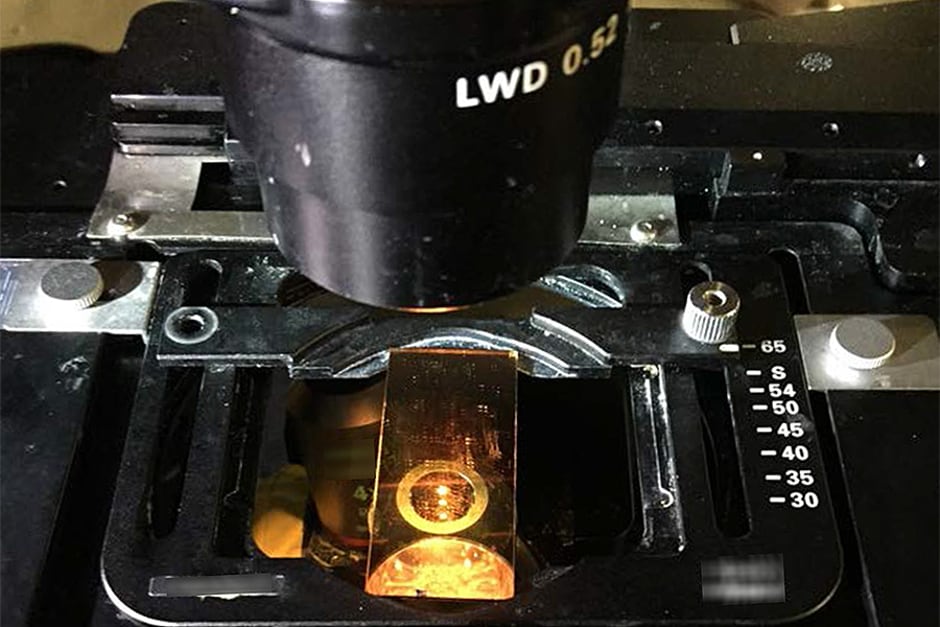
Glass slide coating made of gold and acrylic glass (Photo: UB)
The study, published online in Nature Communications, describes how an updated version of glass microscope slides can now enable scientists to see tiny objects while simultaneously measuring their temperature.
The new transparent coating has the potential to streamline and enhance scientific research worldwide, as well as have implications for computers and electronics, where products require measurement and control of heat in confined spaces.
"We have instruments that magnify incredibly small objects. And we have tools that measure heat, like infrared thermometers. But we haven't been able to combine them in a low-cost and reliable manner. This new coating takes a big step in that direction," said the study's co-lead author Ruogang Zhao, PhD, assistant professor in the University at Buffalo (UB) Department of Biomedical Engineering.
Zhao collaborated with researchers at the University of Pennsylvania, including co-lead author Liang Feng, PhD, assistant professor of materials science and engineering, and electrical and systems engineering.
According to UB, researchers have tried to combine thermal imaging and microscopy for many years. So far, images produced from systems that use thermocouples lack resolution and are often too coarse for modern science. Terahertz and infrared thermal mapping techniques interfere with the microscope's lenses. Other techniques are expensive and time-consuming.
The new coating is made of a layer of acrylic glass sandwiched between two layers of transparent gold which is 20nm thick.
Engineers fabricated the coating so that so-called exceptional points - the sweet spots where unusual light behaviour happens - can develop within the tri-layered structure.
The coating, which is claimed to significantly enhance the slide's sensitivity to light detection, would be added to slides during the manufacturing process, with either the slide or cover slip receiving the coating.
To make use of the new coating, a laser is needed. Zhao says a common helium-neon laser, which can be seamlessly integrated with most microscopes, will do the job.
Common slides, which are often bought in bulk, typically cost around $0.05. The new coating would likely add a few pennies to the cost, Zhao said.
The paper - Exceptional point engineered glass slide for microscopic thermal mapping – can be found at: https://www.nature.com/articles/s41467-018-04251-3




Glasgow trial explores AR cues for autonomous road safety
They've ploughed into a few vulnerable road users in the past. Making that less likely will make it spectacularly easy to stop the traffic for...